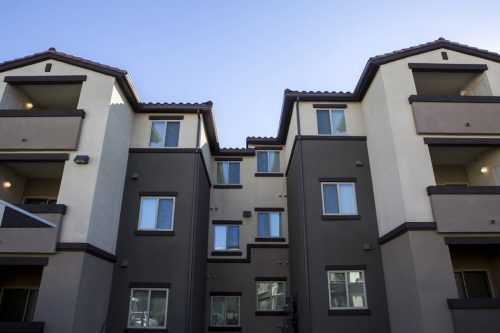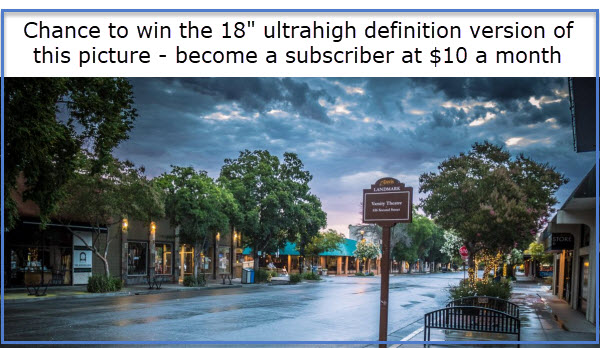
While staff is wanting to hear the council weigh in on the four key issues that both the Planning Commission and Social Services Commission took up earlier this month, staff is asking the council to approve a six-month extension of the current Interim Ordinance which will allow the city time to prepare a revised ordinance before the interim one expires at the end of this year.
Under the Interim Ordinance set to sunset on December 31, the city recommends a 15 percent affordability requirement, with 5 percent each for extremely low, very low and low income individuals. This is known as the 5-5-5 plan.
But even that, as Katherine Hess told the Planning Commission last week, is a target, not a hard line, and the council could approve affordable housing at a lower level than 15 percent on a per-project basis, she told the commission.
As previously noted, the city had Plescia & Company review the ordinance, with BAE providing a peer review of Plescia’s report. The report evaluated development economic feasibility, based upon project economics at the present time.
The report concludes that – under current economic conditions – the Downtown Core Mixed-Use and Large Urban Mixed-Use “are unlikely to be feasible, even without inclusion of any affordable housing  requirements.”
requirements.”
The study specifically assesses the 35 percent requirement in the city’s base regulation. The study asks, if 35 percent is not feasible, what is?
The report finds: “Using the same rent and income limit assumptions from the economic analysis, the interim affordable housing requirement of 5% at the extremely low, very low, and low income categories equates to an approximately 10% operating income reduction to an otherwise market rate project. A lower on-site requirement at higher income levels, such as 10% of units affordable to low income levels, would result in an approximately 5% operating income reduction (instead of 10%).”
Social Services Commissioner Donald Kalman last week called the consultant report “very disappointing.
“This is the death knell for affordable housing in Davis, is how I read this report,” he said. “We’re obviously not doing 35 percent anymore, those days are over.”
Greg Rowe, a Planning Commissioner speaking as a private citizen, stated, “The 35 percent goal is not feasible without RDA [Redevelopment Agency funding].” He went so far as to say that “15 percent is going to be really hard to achieve unless it’s a student rent” and that the Interim Ordinance number of 5-5-5 “may not work.”
On Tuesday, the city staff will ask the council to address the same four questions as the commissions did previously.
Aside from the exact rate, staff wants direction on bed versus unit leases. The Planning Commission voted 3-1 to oppose bed leases for the purposes of affordability with some commissioners
Claire Goldstene noted that she prefers “integration of affordable throughout the site” but there is “no need to eliminate (land dedication), sometimes it is appropriate.”
She said that she likes the flexibility of the three approaches but does not feel strong about changing it, and seems to oppose the concept of student-oriented housing in general.
Don Kalman stated plainly, “These mega-dorms, in part the way they were born was very wasteful because a lot of them have a bathroom almost for every bedroom.” From his perspective, “the city should encourage a reasonable ration of bathrooms to beds.
“We have too many bathrooms,” he stated.
Staff, however, points out both advantages and disadvantages to the process. They note, “Rents are set at a level that is affordable to an extremely-low, very-low, or low-income one-person household. This can be particularly advantageous to students who often do not qualify for state and federal affordable housing subsidies.”
On the other hand, “by-the-bed or by-the bedroom rental/leasing for any income category, result in significantly higher unitized revenue streams to the owner as compared to by-the unit rental/leasing because the determination of income eligibility shifts from the occupants as a unit to each occupant individually.”
But that may make providing such affordability possible.
The question of Targeted Income Levels has been a tricky one.
The Social Services Commission also agreed to leave the 5-5-5 ratio in place. Claire Goldstene concluded that, by not changing the 15 percent requirement, “we are limited in what we can do here.” She reminded her colleagues that these are again a target rather than a mandate and they could always develop alternative ways to reach the 15 percent requirement.
Georgina Valencia added, “5-5-5 my not be exactly where we want to be but there’s flexibility in it. I don’t feel uncomfortable with 5-5-5.”
Staff notes that HUD (Housing and Urban Development) estimates there are 8,956 extremely-low, very-low, or low-income renter households in Davis. Approximately 80 percent of these households are paying more than 30 percent of their income for housing.
They find that “an overpaying household with an extremely low or low income has less than 70% of that income available for other goods and services, including food and transportation. An ‘overpaying’ household with a higher income would likely have greater absolute resources for other expenses.”
Finally, with respect to land dedication or in-lieu fees, staff notes that all but one of the recent multi-family developments has a form of on-site affordable housing.
The exception is the Sterling project, which included a site for 38 family-oriented apartments to be developed by Mutual Housing. “This site would be the only remaining parcel dedicated for non-profit affordable housing within City limits, after construction of the Creekside development beginning this fall,” staff writes.
There are advantages to both on-site and land dedication. For instance, on-site allows for the integration of affordable with market-rate units, they do not require subsidies, and there is no minimum number or minimum parcel size.
On the other hand, land dedication allows the non-profit developer to access “local, state, and federal subsidies that are available only for 100% affordable projects.”
Moreover, it allows the inclusion of extremely-low income units and projects that serve vulnerable populations.
The commission was mixed on this approach – believing that in general on-site was preferable, but there were times when other forms were appropriate.
Georgina Valencia called land dedication “a tool” but pointed out that, by creating a land dedication, they are ignoring issues of affordability for the rest of the site.
Meanwhile, the Planning Commission took a broader view – on a 6-0 vote with one abstention, they voted: “Extend the existing interim ordinance until a date to be determined by the City Council, either in conjunction with the Downtown Specific Plan update, the Housing Element update, or another effort as appropriate.”
The Planning Commission voted to carve out an exception for the downtown core, allow by-the-bed leases, remove the vertical mixed-use exemption, set the 15 percent affordability as a minimum rather than a target, and allow the 5-5-5 mix “to be adjusted up or down based upon the factors listed in the existing ordinance.”
Both commissions wanted the elimination of the vertical mixed-use exemption, the Planning Commission and Social Services Commission differed on bed leases, and, while the Social Services Commission took no position on the 15 percent requirement, the Planning Commission wants it to be the floor rather than a target.
—David M. Greenwald reporting







Does both the Planning and SS commissions know something the consultants don’t about affordable for vertical mixed use? It sounds good to try to build it, but if it doesn’t work, all we’re doing is eliminating a source of affordable by design housing in the downtown